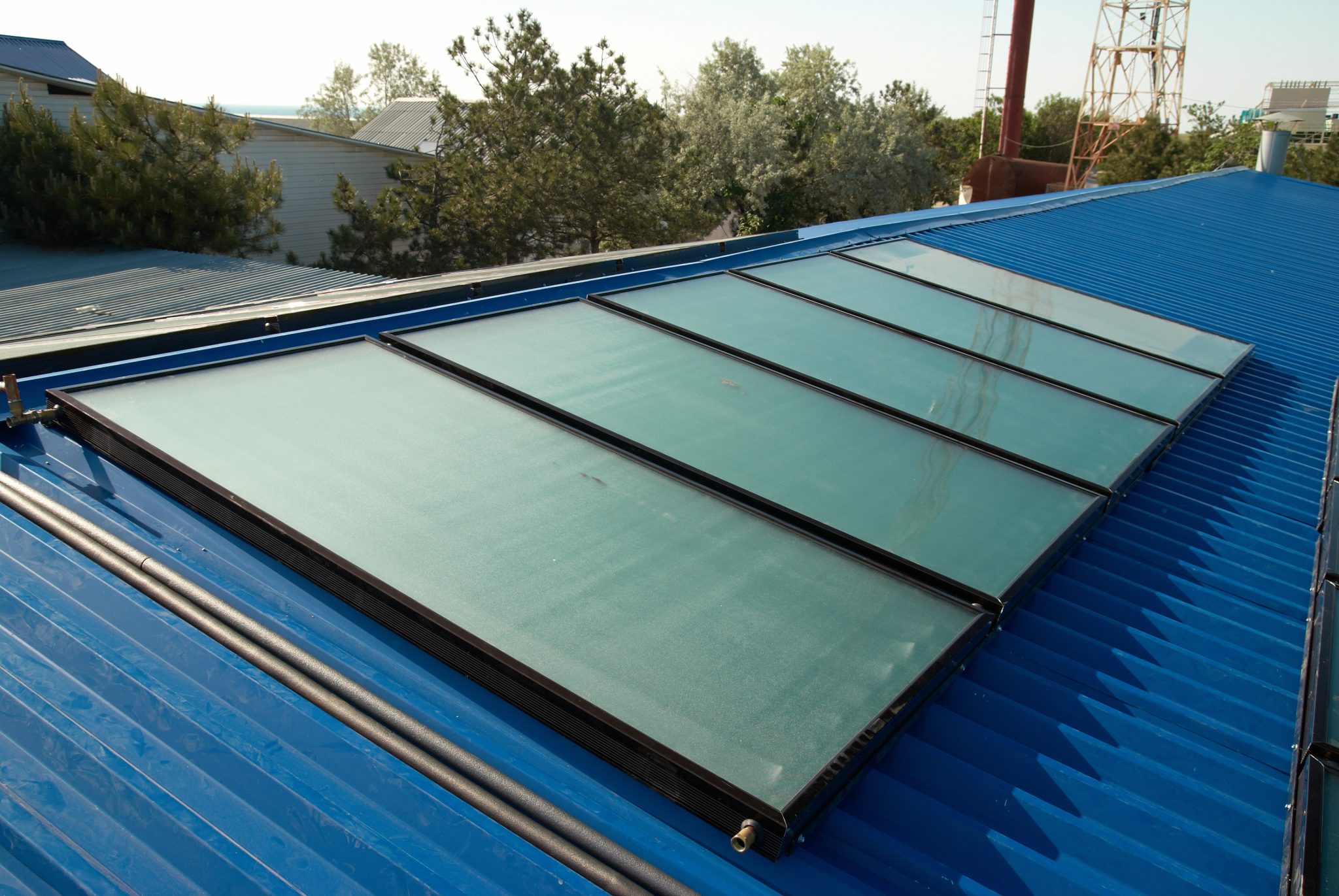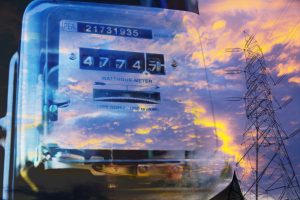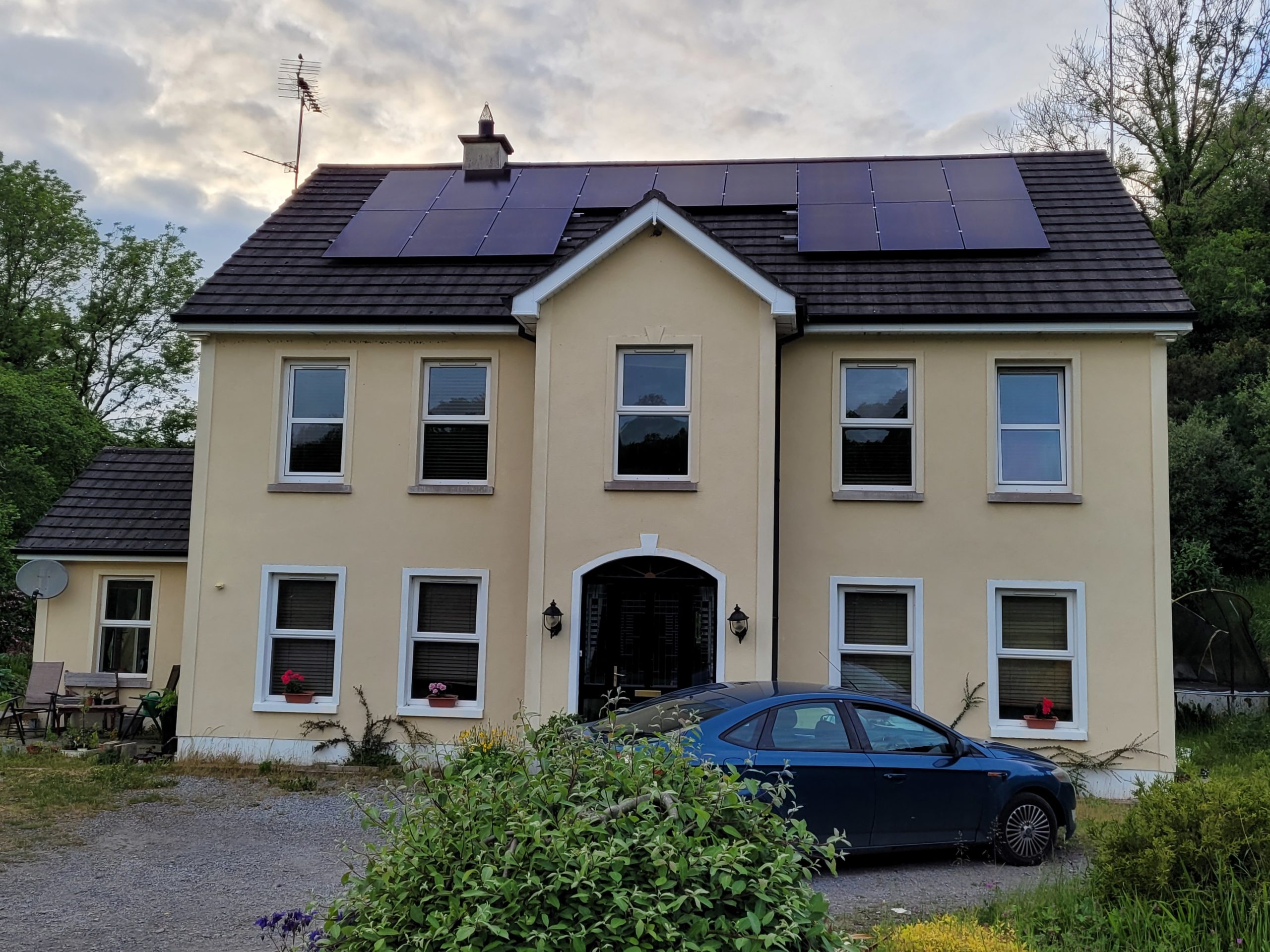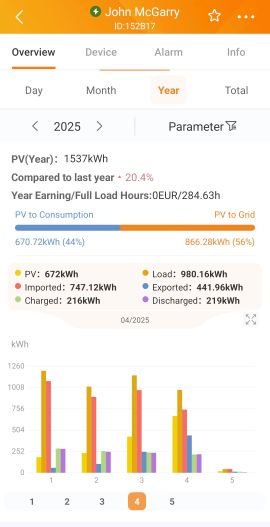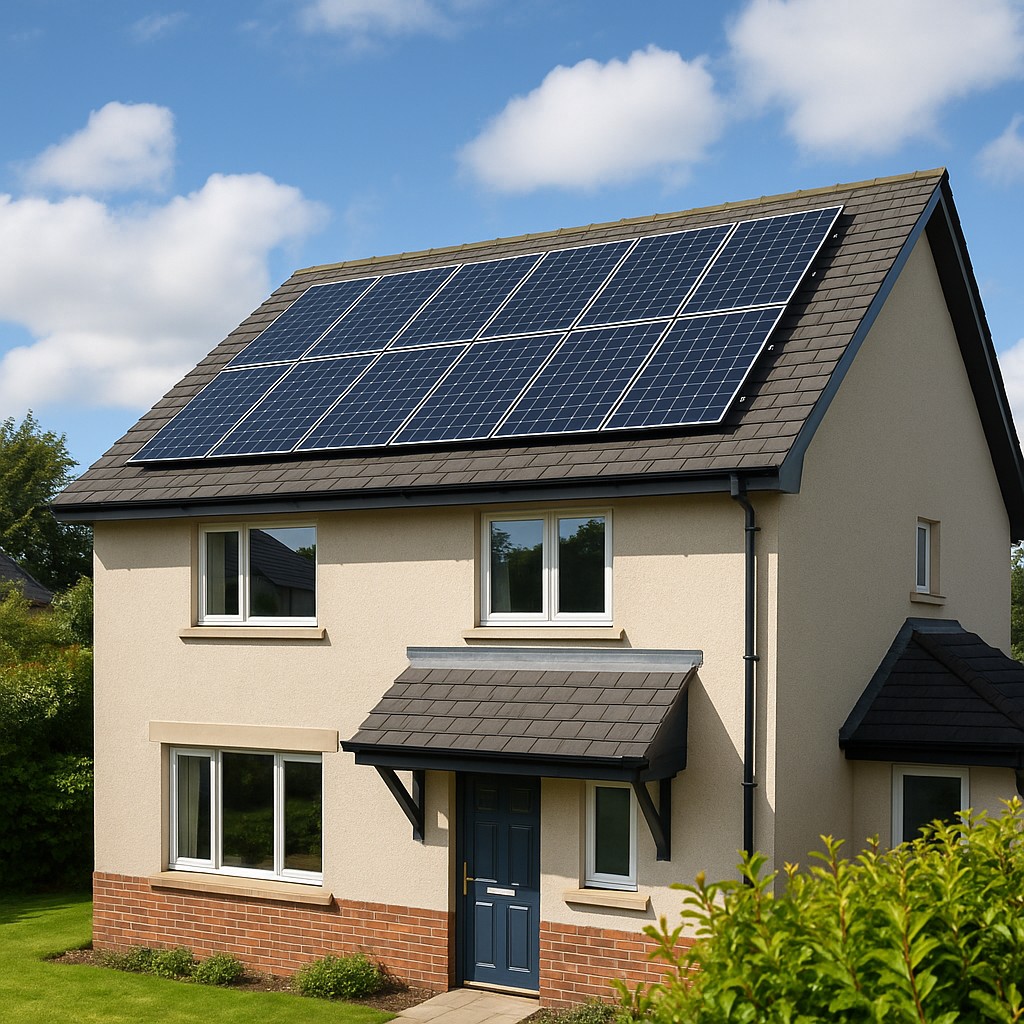If your main issue to resolve is an efficient and eco friendly way to heat water then Thermodynamic Solar Panels might be worth considering. Unlike their traditional counterparts solar panels, they don’t solely rely on sunlight but rather draw upon the ambient air to heat your water, offering a consistent and eco-friendly hot water supply.
As you consider the advantages of integrating this technology into your home or business, you’ll likely weigh its potential to significantly reduce your energy bills against the initial setup cost. However, before making any decisions, it’s crucial to explore both the bright possibilities and the shadows cast by concerns over reliability and maintenance
This journey promises to uncover how thermodynamic solar panels could redefine your approach to sustainable living and whether they’re the right fit for your energy needs.
Understanding Thermodynamic Panels
To truly grasp the potential of thermodynamic solar panels, it’s essential to understand how they harness the ambient air’s heat to provide hot water efficiently. Unlike traditional solar panels that rely on direct sunlight, these innovative units utilize heat exchange technology. This allows them to operate effectively every day of the year, no matter the weather or time.
You’ll find that installing them is quite versatile; they can face South, East, or West and require just a single small panel. This flexibility makes them suitable for a variety of locations, whether it’s your home or a commercial building.
What sets thermodynamic panels apart is their cost-effectiveness. They offer cheaper running costs compared to other solar hot water systems, which means you’ll save money in the long run. The secret behind their efficiency is a clever combination of heat-pump technology with solar energy, ensuring better performance even without direct sunlight.
However, it’s wise to weigh their reliability and servicing needs before you commit. While thermodynamic solar panels are a promising technology for sustainable hot water, considering all factors ensures you make an informed decision.
Operating Principles
Understanding how thermodynamic solar panels work involves grasping their unique method of capturing and transferring heat from the air to your water system. At the heart of this system is a heat exchange technology that pulls heat from the surrounding air, not just directly from sunlight. This means you’re not solely dependent on sunny days to heat your water, making these panels a versatile solution for various climates.
The process starts with the fluid inside the panels absorbing ambient heat. This fluid then passes through an expansion valve where it absorbs even more warmth and becomes hot. Through compression, the fluid’s temperature increases further before it transfers this heat to your water in a hot water cylinder. It’s a sophisticated dance of physics that ensures your water heats up efficiently.
These panels are more than just a one-trick pony; they’re designed to be integrated into your existing heating system or serve as standalone water heaters. However, it’s important to remember that while they offer a space-saving and efficient alternative to traditional solar panels, they come with their own set of cons, such as higher electricity consumption and limited serviceability options. Weighing these factors is crucial in making an informed decision about whether they’re the right fit for your needs.
Advantages & Disadvantages of Thermodynamic Solar Panels
Evaluating the pros and cons of thermodynamic solar panels is crucial before deciding if they’re right for your home. Let’s break down the advantages and disadvantages to help you make an informed decision.
| Aspect | Advantages | Disadvantages |
| Efficiency | More efficient than immersion heaters. | Less efficient than air- and ground-source heat pumps. |
| Installation and Space | Light weight and easy installation. Takes up relatively little roof space. | – |
| Operating Conditions | Can work in temperatures below zero and without sun or at night. | Uses more electricity than solar thermal panels. |
| Maintenance and Longevity | Does not lose efficiency over time. | Reliability problems and difficult to service. |
Thermodynamic solar panels offer a compelling alternative for hot water needs, especially in challenging climates where traditional solar panels falter. They’re a breeze to install and don’t demand much space, making them suitable for various settings. However, it’s important to weigh these benefits against their higher electricity use and potential service issues. They might not be the best choice if you’re looking for a solution that also heats your space. Consider your specific needs and conditions to decide if they align with what thermodynamic solar panels offer.
Comparative Cost Analysis
Let’s delve into how the costs of thermodynamic solar panels stack up against other heating options, from initial setup to long-term savings. When you’re considering upgrading your heating system, it’s crucial to understand not just the upfront costs but also the potential for savings down the line.
Here’s a quick breakdown to grab your attention:
- Initial Installation Costs: Thermodynamic panels might seem pricey at first glance, but when you compare them to the costs of installing traditional solar PV systems or heat pumps, they often come out more affordable. Plus, their versatility in installation locations helps in reducing setup complexities and costs.
- Operational Expenses: You’ll find that thermodynamic panels operate on minimal electricity, making them a cost-effective option for your hot water needs. Unlike immersion heaters that can spike your energy bills, these panels keep operational costs low.
- Long-term Savings and Incentives: The real kicker comes with the long-term savings. Reduced energy bills and eligibility for renewable heat incentive (RHI) schemes mean that the initial investment pays off over time, making thermodynamic panels a financially savvy choice.
Environmental Impact
Exploring the environmental impact of thermodynamic solar panels reveals a greener alternative to traditional heating systems, with significant reductions in electricity usage and operational costs. You’re not just choosing a low-cost heating solution; you’re also making a conscious decision to lower your carbon footprint. Unlike immersion heaters, these innovative panels require less electricity, leading to lower energy bills and a smaller environmental impact.
You’ll find that thermodynamic panels provide hot water throughout the year, perfectly suited for climates like Ireland’s. This means you’re assured of a reliable and sustainable source of energy, regardless of the season. The technology behind these panels marries the efficiency of heat-pump systems with the renewable aspect of solar energy, offering an eco-friendly solution that stands out from conventional options.
While they’re a step up in efficiency, it’s true that thermodynamic solar panels mightn’t fully leverage cheaper night-rate electricity and could face reliability and servicing challenges. However, when you weigh their energy consumption and cost-effectiveness against traditional heating systems, the benefits are clear. You’re not only saving money but also contributing to a more sustainable world.
Reliability Concerns
Despite their numerous benefits, thermodynamic solar panels’ reliability raises some concerns you should be aware of. While these innovative systems are celebrated for their efficiency and cost-effectiveness, there are a few points that might give you pause before making an investment.
Here are three key concerns to consider:
- Weather Dependency: Although designed to work under various weather conditions, their efficiency can significantly drop during prolonged periods of cold or cloudy weather. This variability might affect your system’s overall reliability in providing consistent hot water supply.
- System Complexity: The technology behind thermodynamic panels is more complex than traditional solar panels. This complexity can lead to more potential points of failure, which might increase the likelihood of needing repairs. It’s important to ensure you have access to skilled technicians who are familiar with this specific technology.
- Longevity Questions: There’s limited long-term data available on the lifespan of thermodynamic panels compared to more traditional solar technologies. This uncertainty might make it difficult to predict how often replacements or major repairs might be necessary, impacting your long-term budgeting and planning.
Considering these concerns is crucial as you weigh the potential benefits against the possible drawbacks of installing thermodynamic solar panels.
Installation and Maintenance
Understanding the installation and maintenance of thermodynamic solar panels is straightforward, requiring minimal upkeep to ensure their efficient operation. You can mount these innovative panels on roofs, walls, or even as standalone units, making them a versatile option for both your home and business. They’re designed to work efficiently regardless of their orientation, though south-facing installations might snag a bit more efficiency.
When it comes to setting them up, a variety of mounting systems are at your disposal, ensuring a secure and optimal positioning. Once installed, the panels demand little from you. Their operation is automatic, with a refrigerant fluid circulating in a closed loop, needing only occasional cleaning to maintain peak efficiency. You’ll find that direct sunlight can boost their performance, although they’re adept at capturing ambient heat even on cloudy days.
The system includes a control unit on the compressor, displaying its status and featuring an anti-legionella function to ensure the water remains safe. If you’re considering installation, clicking a button can get you up to four personalized quotes, making it easy to compare options and secure the best deal.
With such straightforward maintenance and flexible installation options, thermodynamic solar panels offer a hassle-free path to greener energy.
Choosing a Supplier
When it comes to picking a supplier for thermodynamic solar panels, it’s crucial to weigh their experience, reliability, and the services they offer. You’re not just buying a product; you’re investing in what should be a long-term solution for your hot water needs. Here’s what you should consider to make an informed choice:
- Experience and Reputation: Look for suppliers with a solid track record. Those who’ve been in the business longer tend to have more refined processes and a better understanding of customer needs. Don’t just take their word for it; check customer reviews and ask for case studies or references.
- After-Sales Support: The quality of after-sales service is as important as the product itself. Ensure your supplier offers comprehensive warranty terms, responsive customer service, and technical support. This support will be invaluable in case you encounter any issues or have questions down the line.
- Cost and Value: Compare quotes from different suppliers, but don’t make your decision based solely on price. Consider the overall value, including installation quality, payment options, and how the supplier helps maximize the benefits of your thermodynamic solar panels.
Choosing the right supplier is a critical step in ensuring your thermodynamic solar panels meet your expectations and provide reliable, cost-effective hot water for years to come.
Conclusion
In conclusion, fi you sole interest is heating water then you’re now at the forefront of sustainable living with thermodynamic solar panels. They’re not just eco-friendly, but also cost-efficient, revolutionizing how you use hot water at home or in your business.
With their unique ability to harness ambient air, these panels significantly cut down on electricity usage, offering a flexible solution that fits seamlessly into your life.
Choosing the right supplier ensures you enjoy all the benefits, including lower maintenance and a positive environmental impact.
Welcome to the future of energy consumption.

